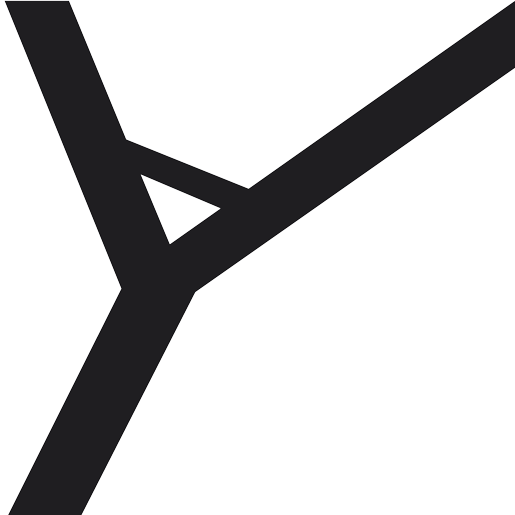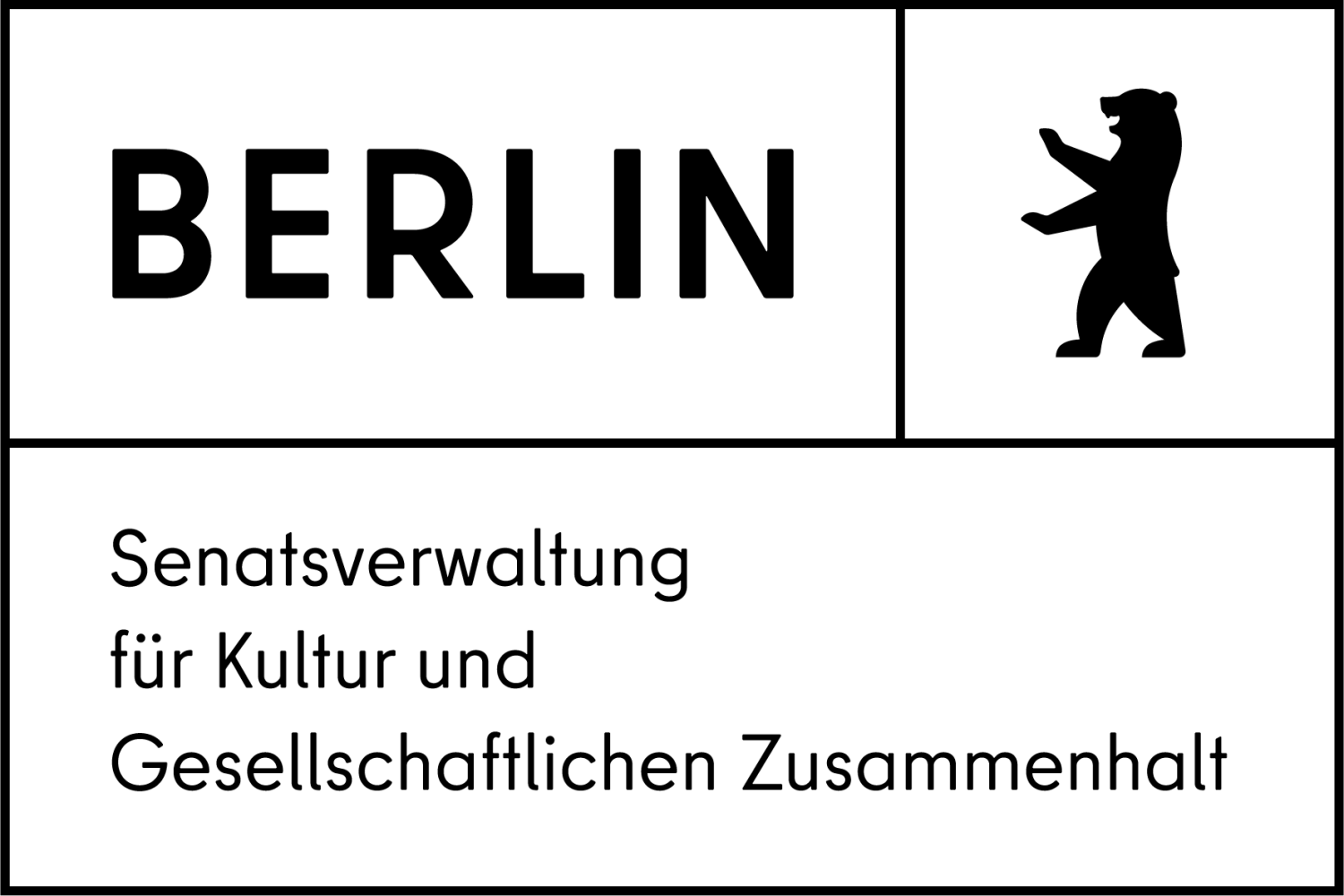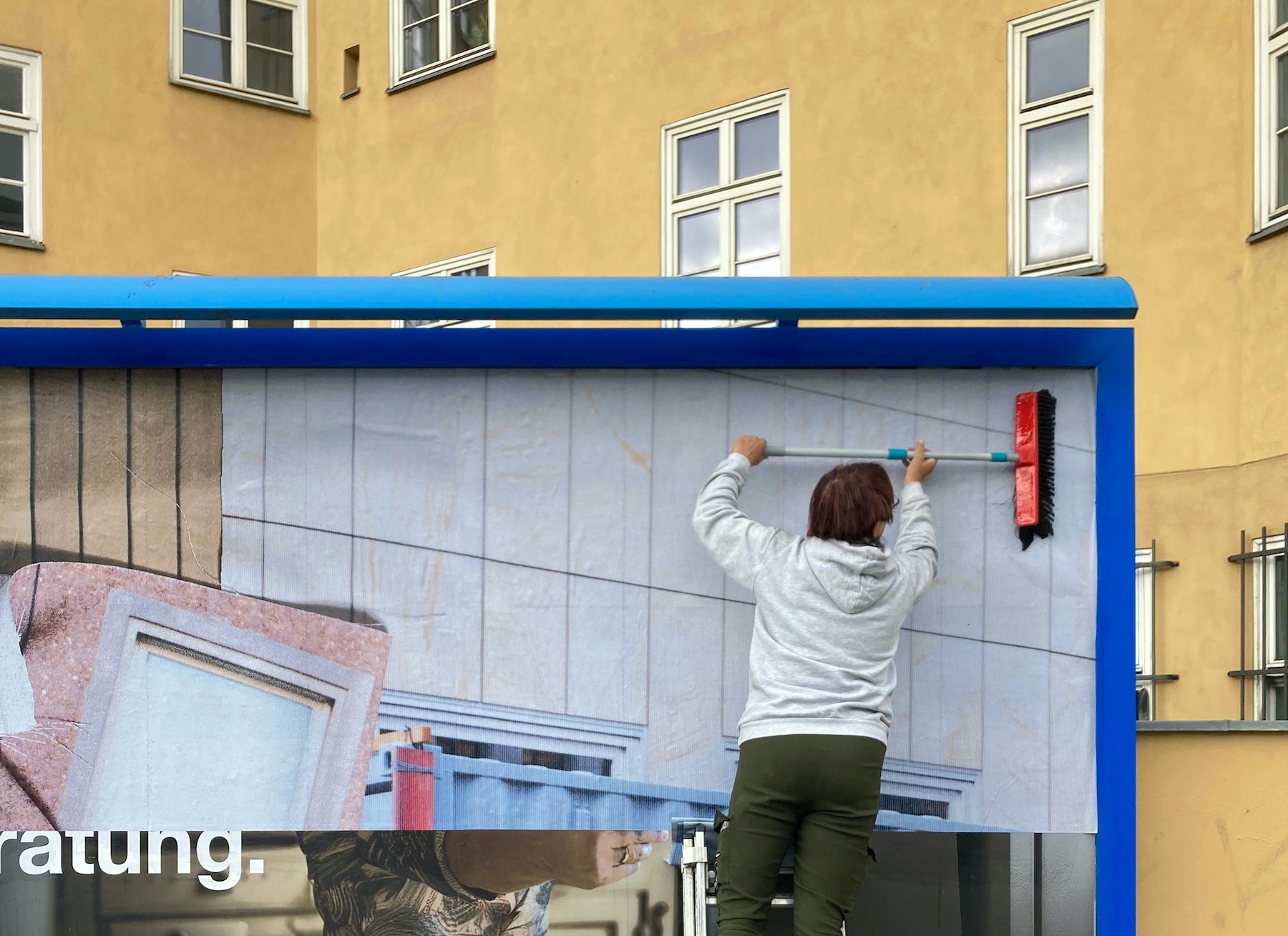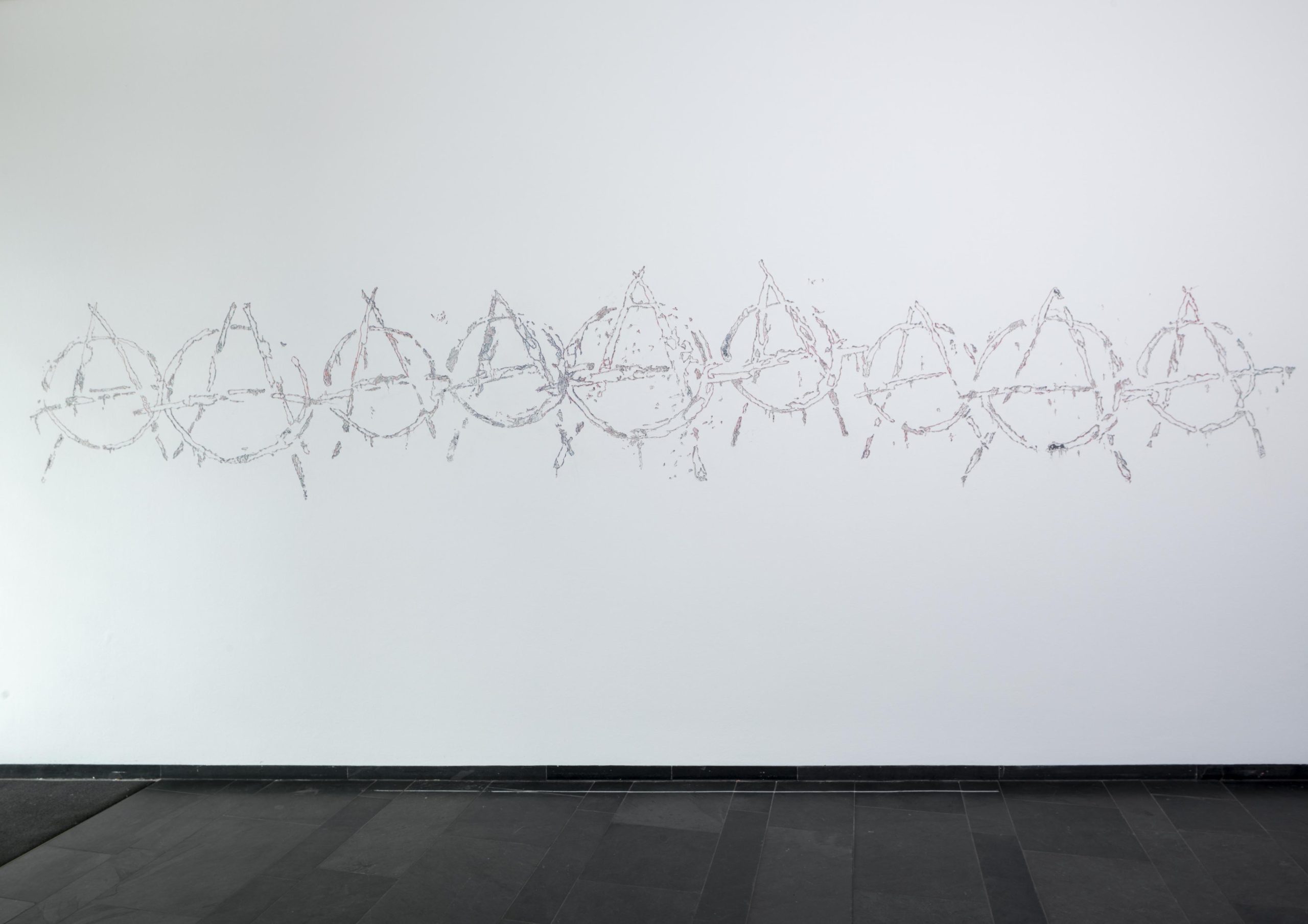Mark Fridvalszki, Marko Tadić, The Future is Out There
Ausstellung / Exhibition: 1.5.-14.6.2025
Eröffnung/ Opening: 2.5.2025 6-9 pm
Öffnungszeiten / Opening hours: Do – Sa / Thu – Sat 14 – 18 h
Am Gallery Weekend zusätzlich geöffnet am So, 4.5.2025, 14-18 h / On Gallery Weekend additionally open on Sun, May 4, 2025, 2-6 pm
In March 2025, the Kunstverein moved into a prefab building directly at Rosa-Luxemburg-Platz – a place that, like Berlin itself, may not be old, but has become a focal point of historical upheavals within its relatively short existence. The changing names of the square, from Bülowplatz to Horst-Wessel-Platz and finally to the present Rosa-Luxemburg-Platz, reflect the political and social transformations that have shaped this location. This is where multifaceted chapters of history are told, offering a perfect backdrop for artistic reflection on the failure of the grand utopias of the 20th century – whether socialist, Zionist, green, or capitalist. Traces of these utopias can be found deep within the cultural DNA of the city and this place.
Against this specific background, Mark Fridvalszki and Marko Tadić created an intense staging that combines their works – a mix of wall installations, paintings, prints, drawings, models, archival objects, and sound – into a reflection on the potential and limits of utopian thinking. The artists, originally from the former socialist countries of Hungary and Yugoslavia, have long been concerned with how visions of a better world gradually break down but continue to live on in small fragments and objects within our everyday reality. These fragments now exist somewhere between nostalgia and the future.
The exhibition taps into these ideas and uses the prefab building itself as a symbol for these broken dreams: a building that has witnessed radical changes – from the ideological struggles of the 20th century to the urban transformations of modern Berlin. It is not only about aesthetic engagement but also about examining utopias as grand social visions developed in response to the discomfort of the present, as described by Lyman Tower Sargent and others.
As part of this exhibition, the ‘Schaufenster’, a separate display window, is activated by a a loan from the collection of the Museum Utopia und Alltag in Eisenhüttenstadt – a former neon sign of the GDR travel agency in Jena in the form of a stylised globe. This historical piece is complemented by a wallpaper and ornamental window foil designed by Fridvalszki and Tadić, thus adding another dimension to the question of the material remains of failed utopias.
The reuse of found images, objects, and displays also gives the exhibition an ecological dimension and emphasizes sustainable resource use – an approach that not only reflects on unfulfilled utopian dreams but also attempts to develop new ideas for the future from their remnants. Despite their failure, their importance for social change remains unbroken. Through artistic collaboration, a dynamic installation is created that understands failure creatively and conveys how radically different futures could look. Ideally, it will offer visitors impulses by pointing to models of how societies react to crises and develop visionary solutions.
With this exhibition, the participating artists approach themes of media archaeology from different perspectives. In Tadić’s models an images, the world manifests as a kind of miniature stage. It is not so much a world made of things but of machines that have shown them or through which they appeared: cinema, museums, exhibitions, postcards, etc. Fridvalszki counters this with his expansive wall installations. Music serves as an interplanetary common language – similar to Steven Spielberg’s naive futuristic film Close Encounters of the Third Kind (1977). This exhibition plays with the concept of „UFO Modernism“ – the idea of preparing for a higher state of consciousness and leaving behind humanity’s animalistic side.
Although Fridvalszki and Tadić pursue visually different approaches, the message remains the same: it is about the idea of collectivism and the potential of an uncertain future. The unifying element of their work is the appropriation of everyday images from the past to question aesthetic phenomena under contemporary conditions.
This virtually echoes in the newly composed, all embracing composition by Àbáse and Ziggy Zeitgeist. Playful images and elements such as climbing frames or playgrounds set the tone for this vision. It is about reactivating the spirits of past subcultures, from ‘68 to ‘89, emphasizing solidarity and the „we“ rather than the „I.“ In that sense a jazz band symbolizes the most democratic form of collective work: playful, creative, spiritual, and emotional at the same time.
The exhibtion was curated by Susanne Prinz
Marko Tadić's works visualise a conflict between personal memory and political history. Archival images, photo-grattages, drawings and objects illustrate fragments of possible worlds. His small-scale objects and scale models are intended to allow us to take the position of a thinker, a maker; a phenomenological step back for a better understanding of things. His artworks are simple, accessible and mobile; they evoke a combination of work and play. He proposes a strategy for demonstrating ideas and systems.
Wir danken dem Museum Utopie und Alltag in Eisenhüttenstadt für die freundliche Zurverfügungstellung eines Expoants aus ihrer Sammlung. / We would like to thank the Museum Utopie und Alltag in Eisenhüttenstadt for kindly making an exhibit from their collection available to us.
Mark Fridvalszki’s practice, which he describes as archeo-futurological, draws on cultural sediments from lost collective futures. Turning to the more encouraging visions of the past while using pigment transfer, screen printing, photocopying, digital and offset printing, Fridvalszki creates collages from a growing archive of images sourced from books, records, and printed matter from the 1950s to 1990s—collected much like a DJ digs for samples - he explores thus alternative futures. Through these recycled materials, he evokes cultural memory, future-oriented thinking, psychedelia, sci-fi scenarios, and solidarity, inviting viewers to imagine possibilities beyond the present.
Die Ausstellung wurde ermöglicht durch die Unterstützung der Senatsverwaltung für Kultur und Gesellschaftlichen Zusammenhalt. / The exhibition was made possible by the support of the Senate Department for Culture and Social Cohesion.
Susanne Bürner, moving walls (Mitte)
Installationsdauer / Installation duration: 22.4. – 8.5.2025
Zu sehen / Visible: 24/7
Während in der Rosa-Luxemburg-Straße installiert wird, ist nur ein paar Blocks entfernt für einen kurzen Zeitraum ab 22.April eine Intervention der Berliner Künstlerin Susanne Bürner entstanden – eine Plakatwand mit Fotos von Häuserfassaden in Berlin Mitte, die auf verschiedene Stoffe gedruckt, geschichtet, collagiert und anschließend erneut fotografiert wurden. Die abgebildeten Hauswände – darunter etwa die der Botschaft der Tschechischen Republik – stehen für unterschiedliche Epochen der Berliner Baugeschichte. Übereinandergelegt, werden die bedruckten Stoffe zu Membranen zwischen diesen Architekturen. Installiert im öffentlichen Raum in Berlin-Mitte, korrespondieren die Fassaden auf dem Plakat mit den umgebenden Gebäuden.
Die Plakatwand befindet sich an der Torstraße/Ecke Karl-Liebknecht-Straße mit folgenden Google-Koordinaten: 52.527189, 13.415033
Susanne Bürner arbeitet zur Repräsentation von emotional aufgeladenen Räumen, vorwiegend in fotografischem Bild. Sie interessiert sich für die Illusionswirkung von Bildern, die sie oft in ihren Arbeiten dekonstruiert. Susanne Bürner lebt und arbeitet in Berlin.
Die Plakatintervention wurden von Susanne Prinz kuratiert.
Eng.: While the space in Rosa-Luxemburg-Straße is being set up, quietly an intervention took shape just a few blocks away. As of April 22, an intervention by Berlin based artist Susanne Bürner has appeared — a billboard with photos of house facades in Berlin Mitte that have been printed on various materials, layered, collaged and then photographed again. The house walls depicted – including that of the Embassy of the Czech Republic – represent different eras in Berlin’s architectural history. Placed on top of each other, the printed fabrics become membranes between these architectures. Installed in public spaces in Berlin-Mitte, the facades on the poster correspond with the surrounding buildings.
Susanne Bürner’s works represent emotionally charged spaces, primarily through photographic images. She is interested in the illusionary effect of images, which she often deconstructs. Susanne Bürner lives and works in Berlin.
The intervention was curated by Susanne Prinz.
Völkerfreundschaft */* Access All Areas (AAAAAAAAA), Eric Meier
Eröffnung / Opening: 14.9.2024, 14-18 h
Ausstellung / Exhibition: 14.9. – 31.3.2025
Öffnungszeiten / Opening hours: 24/7 (Völkerfreundschaft) / Do-Sa 14-18 h*
Die Installation Völkerfreundschaft befindet sich auf der Grünfläche zwischen Almstadt- und Rosa-Luxemburg-Straße, Access All Areas (AAAAAAAAA) im Foyer des Kunstvereins. / The sculpture is located on the public green between Almstadt- and Rosa-Luxemburg-Straße, Access All Areas (AAAAAAAAA) in the foyer of the Kunstverein.
In den Werken Völkerfreundschaft und Access All Areas (AAAAAAAAA) greift Eric Meier die Dynamik des Unfertigen, Prozesshaften und des politischen Statements auf. Völkerfreundschaft ist eine Bodeninstallation, die durch ihre bewusst unfertige, provisorische Anmutung sowohl dystopische Elemente der DDR-Vergangenheit als auch utopische Visionen zukünftigen Zusammenlebens reflektiert. Der Einsatz von fusionierten Glasskulpturen und Betonelementen verstärkt diesen zeitlichen Schwebezustand zwischen Vergangenheit und Zukunft.
Diese Idee des Unvollendeten hat ein Echo in der Wandarbeit Access All Areas (AAAAAAAAA), die den Anarchiegedanken und die Frage nach Zugänglichkeit thematisiert. Wie ein Slogan, als wäre er von Jugendlichen in den Raum geworfen, greift das Werk politische Gesten auf und hinterfragt dabei gesellschaftliche Strukturen in einer Zeit wachsender Unsicherheit.
Beide Werke vereint eine für den Künstler typische ironische Auseinandersetzung mit Vergangenheit, Gegenwart und Zukunft, wobei sie auf unterschiedlichen Ebenen die Frage nach Zugehörigkeit und Zugang in der modernen Gesellschaft stellen.
Meiers Fotografien, Skulpturen und Videoarbeiten zeigen stets urbane Räume und Fragmente, in die sich Zeichen der postsozialistischen Transformation und der Verlust gesellschaftlicher Utopie eingeschrieben haben. Fotografien werden dabei zu Indikatoren von Wandel, die gleichermaßen von individuellen Mythologien wie kollektiven Umkodierungen oder Überformungen zeugen. Dies setzt sich in Meiers Installationen fort, die seine fotografische Arbeit mit Räumen aus Waschbeton, Second-Hand-Textilien und fusioniertem Glas verbinden. Dabei öffnet sich ein dritter, ästhetischer Raum, der irgendwo zwischen Utopie und Dystopie angesiedelt ist. Meiers Rhetorik ist vielschichtig, aber agiert nicht im Verborgenen. Themen des Scheiterns, des Verlustes, oder sozialer Identität ist der Arbeit inhärent. Er legt den Status-Quo des Umgangs mit städtischen wie medialen öffentlichen Räumen offen, in denen Verrohung und Vernachlässigung oft Teil der Realität ist.
Eric Meier( *1989 in Berlin, DDR, aufgewachsen in Frankfurt an der Oder) lebt in Berlin. Meier studierte an der Ostkreuzschule für Fotografie Berlin, Hochschule für Grafik und Buchkunst Leipzig und an der Universität der Künste Berlin
Kuratiert von Susanne Prinz.
In his new works Völkerfreundschaft and Access All Areas (AAAAAAAAAAA), Eric Meier picks up on the dynamics of the unfinished, the processual and the political statement. Völkerfreundschaft is a floor installation that reflects both dystopian elements of the GDR past and utopian visions of future coexistence through its deliberately unfinished, provisional appearance. The use of fused glass sculptures and concrete elements reinforces this temporal limbo between past and future.
This idea of the unfinished is echoed in the wall piece Access All Areas (AAAAAAAAA), which thematises the idea of anarchy and the question of accessibility. Like a slogan, as if literally thrown into the room by young people, the work picks up on political gestures and questions social structures in a time of growing insecurity.
Both works are united by an ironic examination of the past, present and future, posing the question of belonging and access in modern society on different levels.
Eric Meier’s photographs, sculptures, and video works consistently depict urban spaces and fragments that bear the marks of post-socialist transformation and the loss of societal utopia. His photographs become indicators of change, reflecting both individual mythologies and collective re-codings or overwrites. This theme extends into Meier’s installations, which integrate his photographic work with spaces made of exposed aggregate concrete, second-hand textiles, and fused glass. These installations create a third, aesthetic space situated somewhere between utopia and dystopia. Meier’s rhetoric is multilayered, yet it does not operate in secrecy. Themes of failure, loss, and social identity are inherent in his work. He exposes the status quo of how urban and media-driven public spaces are treated, where coarsening and neglect are often part of the reality.
Eric Meier (born 1989 in Berlin, GDR, and raised in Frankfurt an der Oder) lives in Berlin. Meier studied at the Ostkreuz School of Photography in Berlin, the Academy of Fine Arts Leipzig, and the Berlin University of the Arts.
Curated by Susanne Prinz.
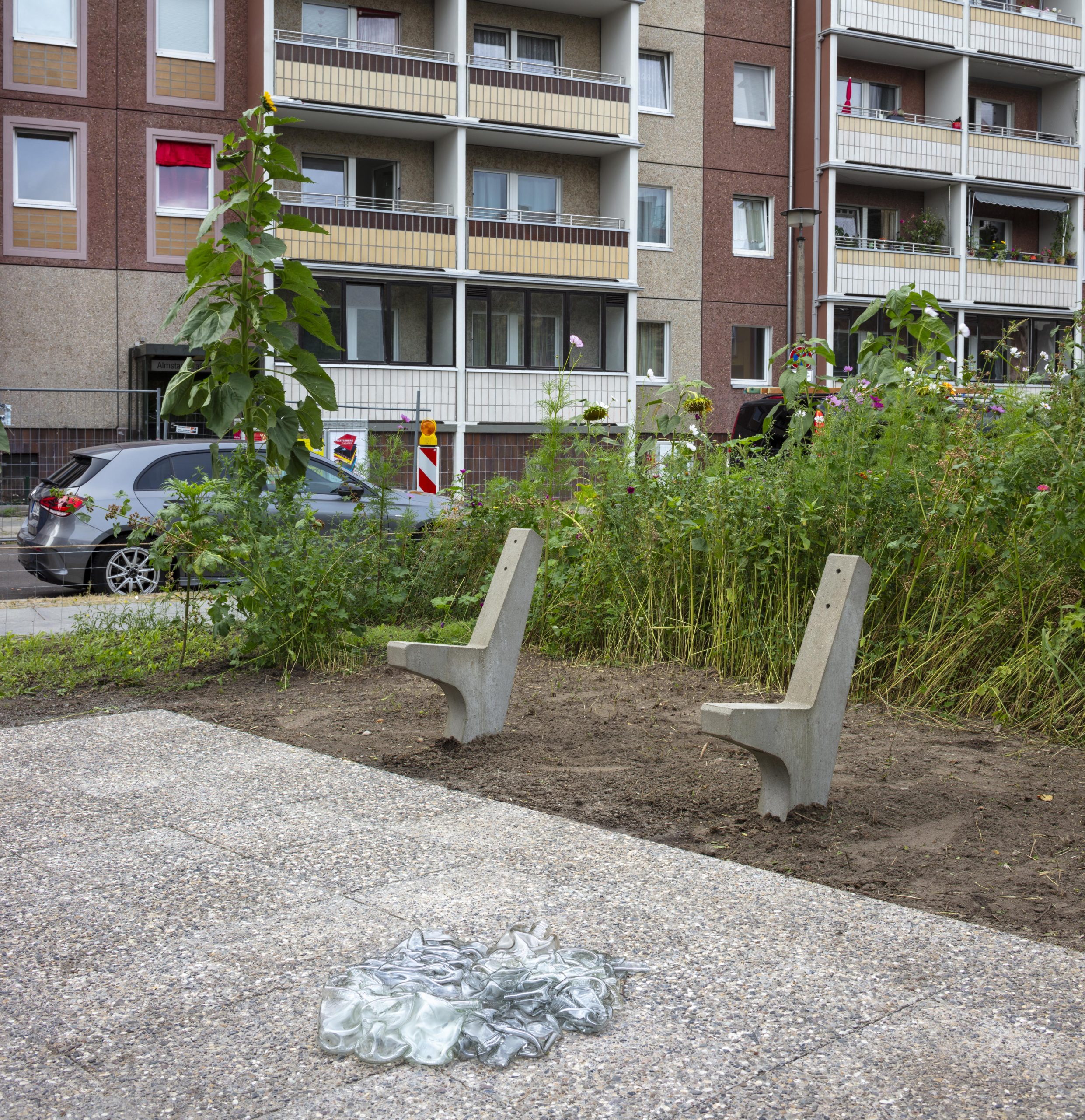
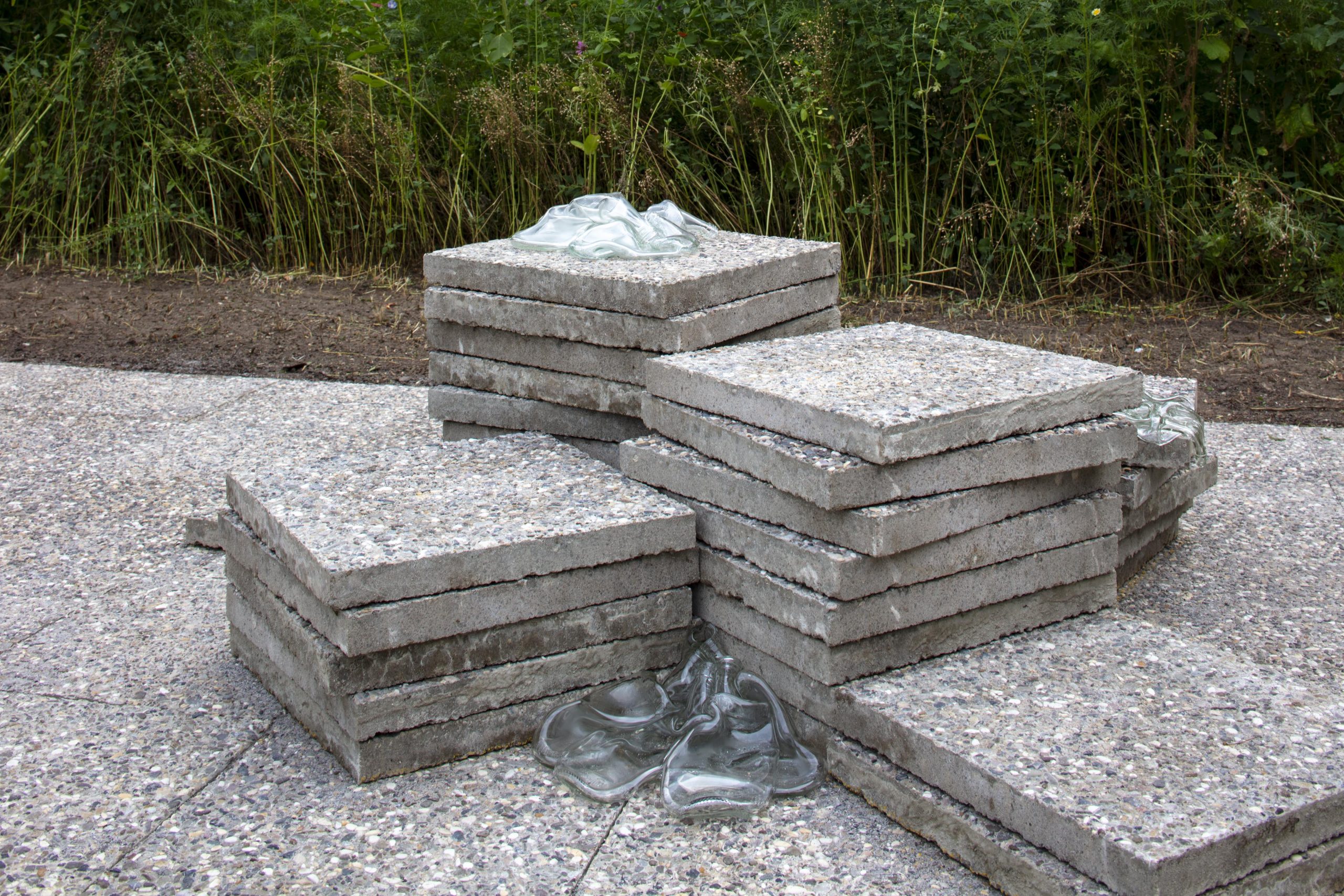
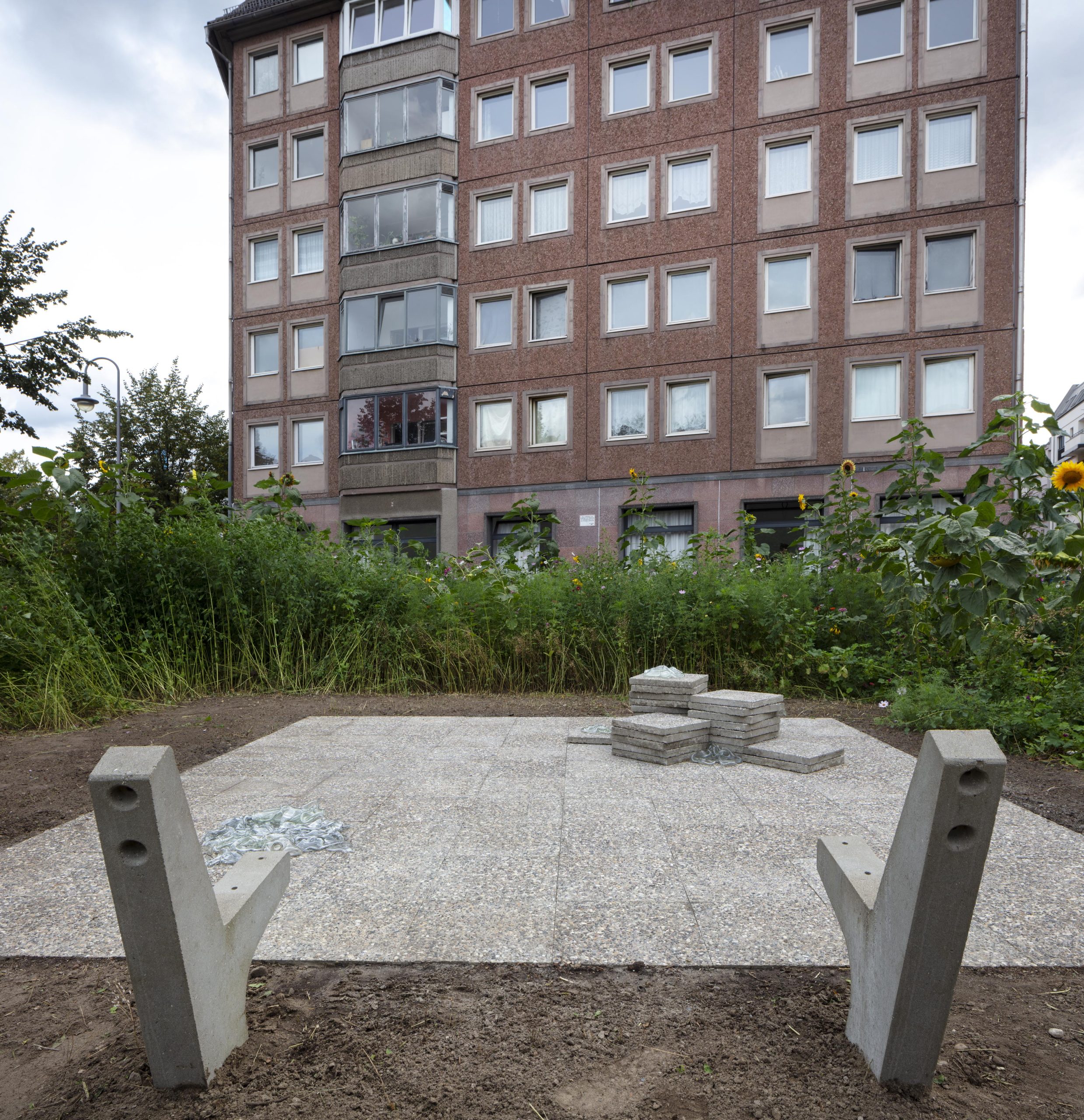
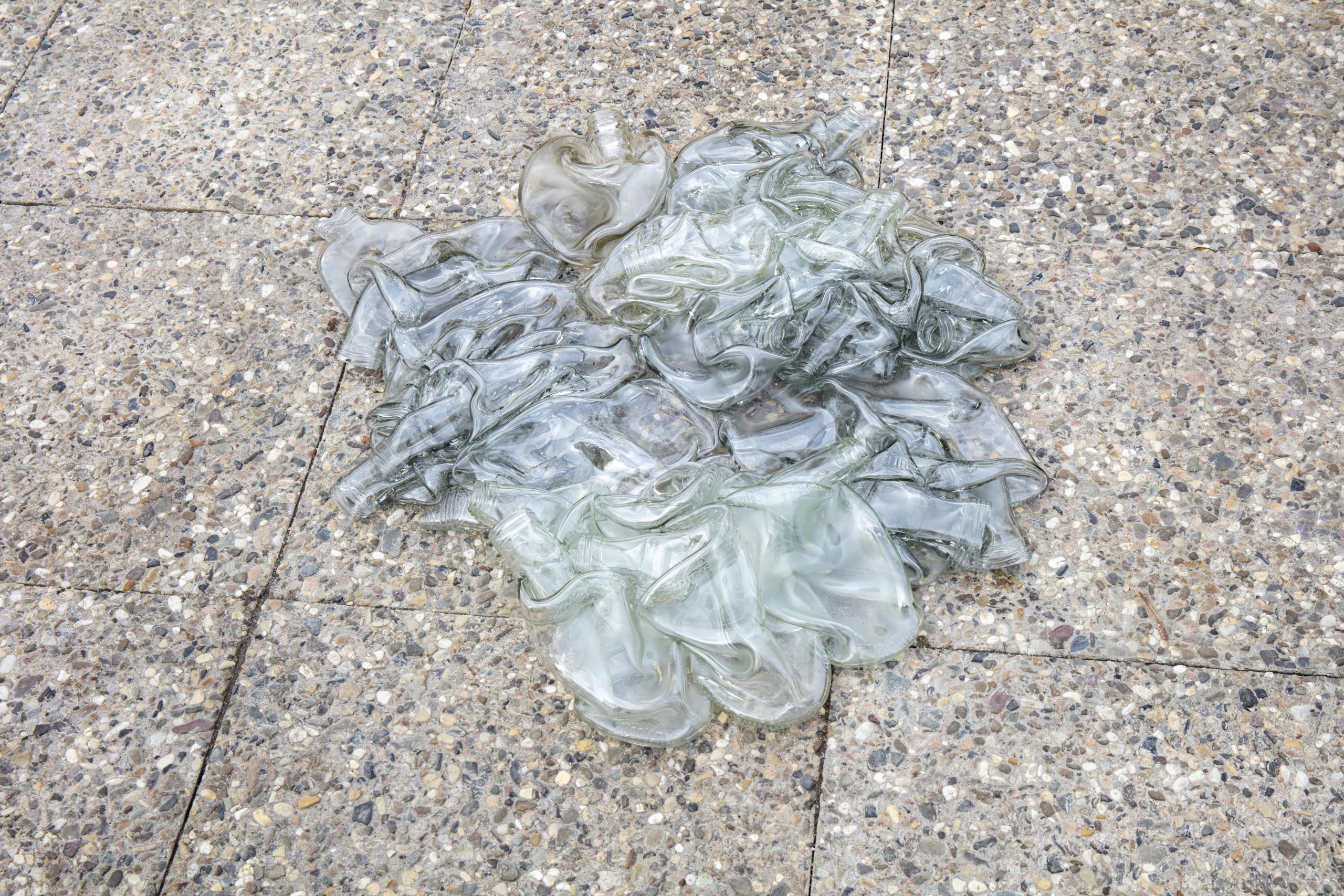
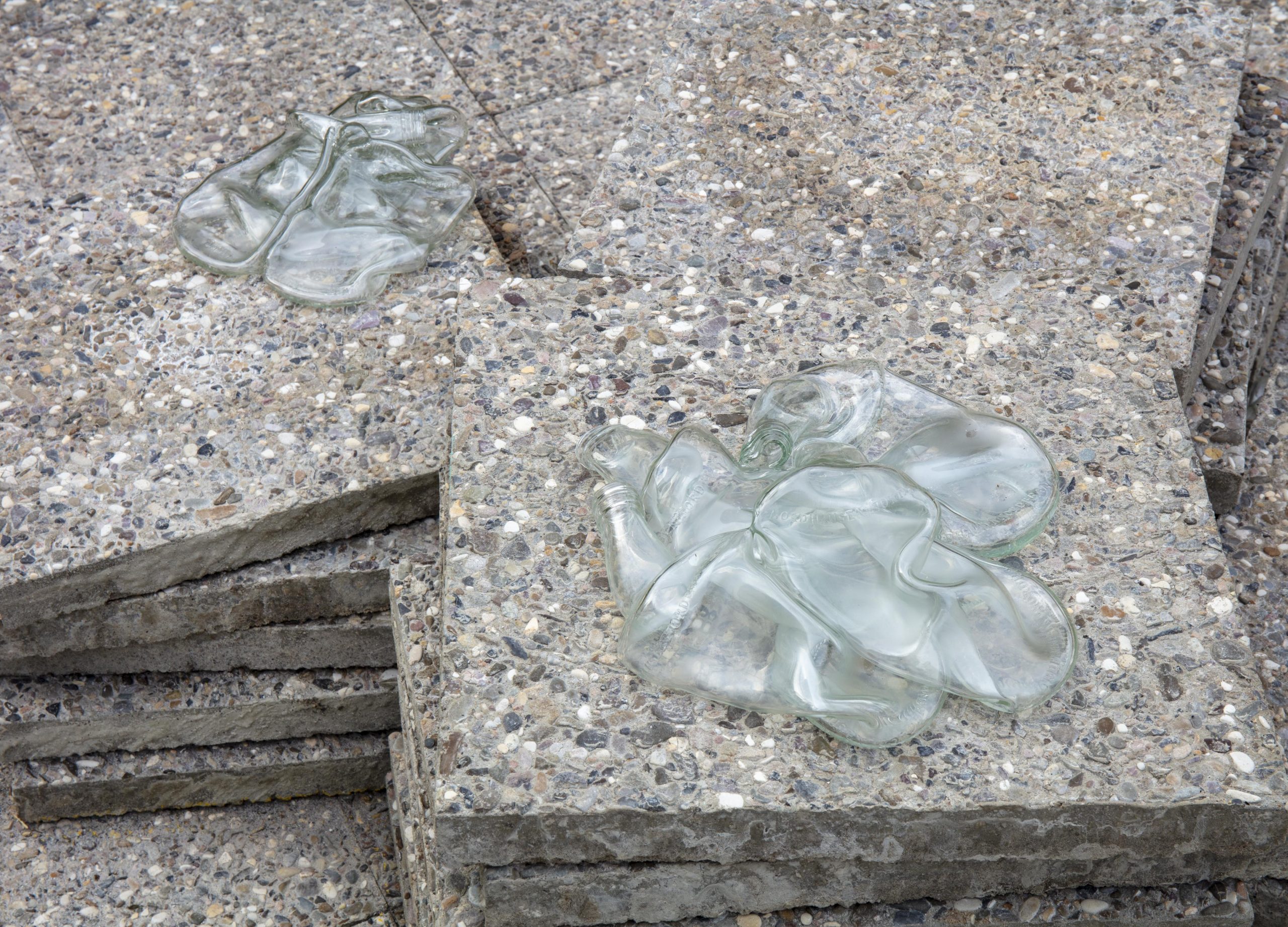
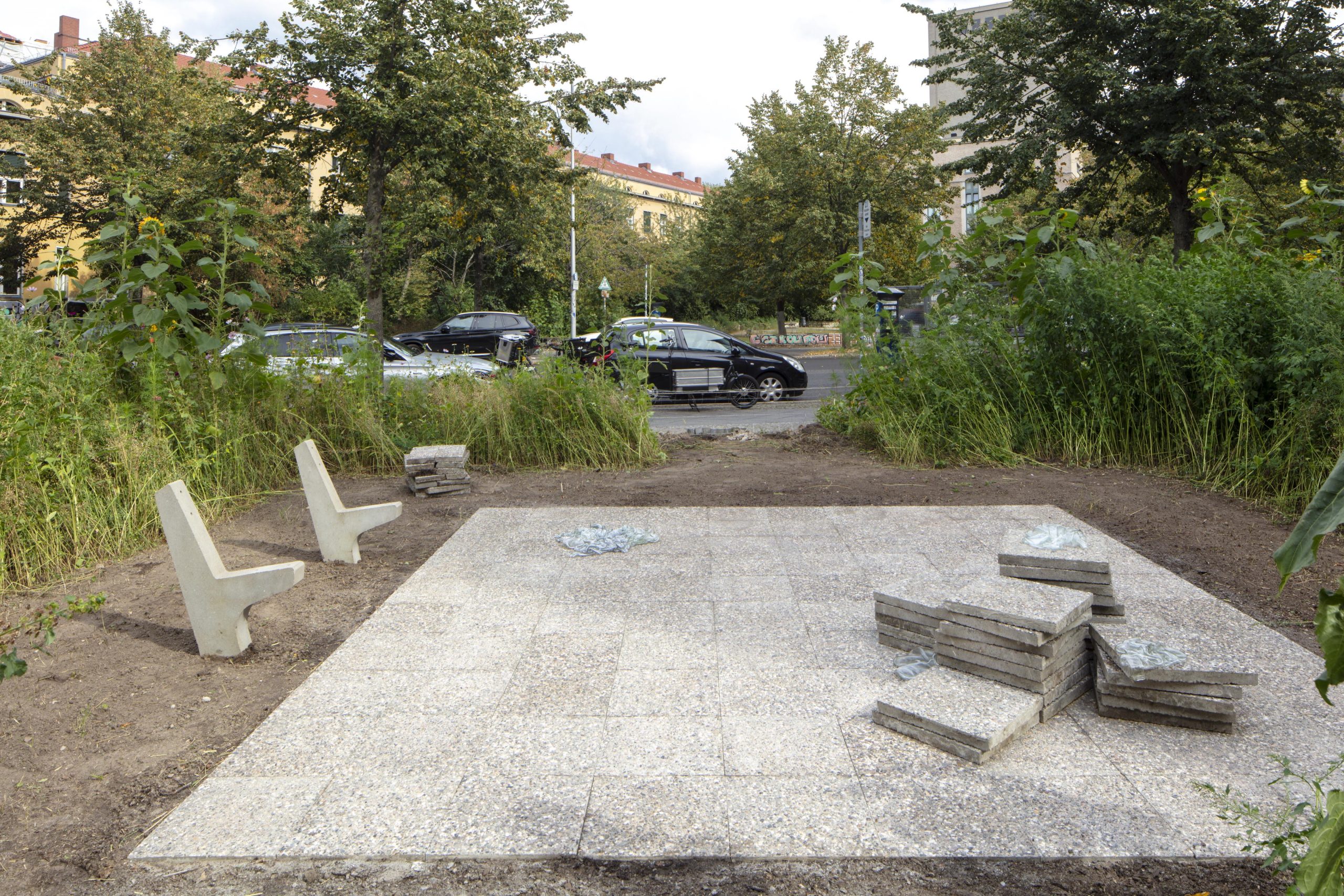
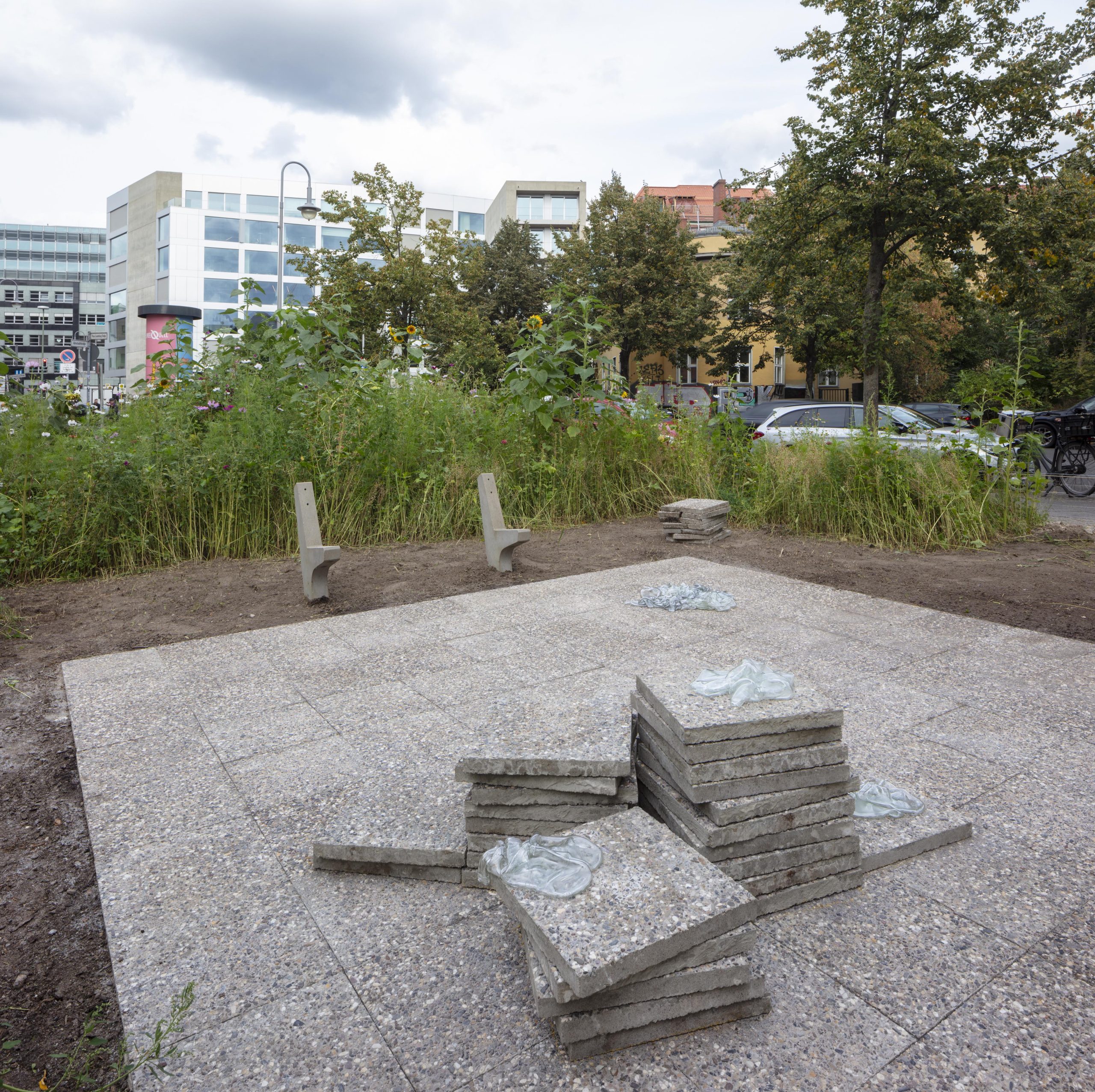
* an gesetzlichen Feiertagen geschlossen / closed on public holidays
Unterstützt von / supported by IBAUmbh, Berlin.
